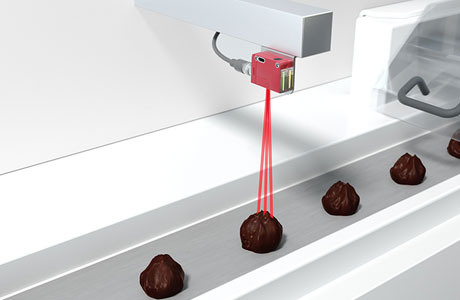Key Takeaway
Photoelectric sensors play a crucial role in Industry 4.0 by enabling seamless communication between machines. They track objects on production lines and provide real-time data that enhances automation and decision-making.
By integrating with IoT, these sensors enable predictive maintenance, reducing downtime and improving efficiency. Their ability to communicate and coordinate within smart factory systems boosts productivity, making them essential for modern manufacturing.
The Role of Photoelectric Sensors in Smart Manufacturing
In smart manufacturing, photoelectric sensors are the unsung heroes driving efficiency and precision. These sensors detect objects, changes in light intensity, or the distance between objects in production lines, enabling machines to function seamlessly without human intervention. This automation is the core of Industry 4.0, where interconnected devices communicate in real-time to optimize operations.
Photoelectric sensors play a crucial role in preventing errors and ensuring consistent quality. For instance, in packaging, they ensure products are correctly aligned and packaged at high speeds. Their adaptability to various environmental conditions, including dusty or damp settings, makes them indispensable across industries.

How Sensors Enable Real-Time Data Collection in Industry 4.0
Real-time data is the backbone of Industry 4.0, and sensors are the tools collecting this data. Photoelectric sensors excel in gathering critical information from production lines, helping businesses make data-driven decisions. These sensors capture details like object presence, distance, and color, transmitting this data to control systems instantly.
This data is then analyzed to detect inefficiencies, prevent malfunctions, and even anticipate equipment failures before they happen. For example, if a conveyor belt in a factory is misaligned, the sensor alerts the system immediately, allowing quick adjustments to avoid costly downtime. This continuous monitoring enables businesses to maintain high production efficiency and ensures that products meet stringent quality standards.
In Industry 4.0, the fusion of data collection and automation leads to smarter factories. The insights derived from sensors drive operational improvements and help businesses stay competitive by reducing waste, enhancing output, and ensuring a more agile response to changing market demands.
Enhancing Automation and Efficiency with Photoelectric Sensors
Automation is a defining feature of Industry 4.0, and photoelectric sensors are key to making it possible. These sensors bring a new level of precision and speed to automated systems, reducing human error and increasing productivity. For example, in an automated warehouse, sensors detect the presence and movement of objects, directing robotic arms to pick and place items with pinpoint accuracy.
In production lines, photoelectric sensors help manage inventory, track parts, and ensure machines are working at full capacity. They communicate with other sensors and devices, allowing for synchronized operations across multiple stages of manufacturing. The result is a smoother, faster process with fewer interruptions and higher output. Moreover, the integration of photoelectric sensors into industrial systems enables self-correcting mechanisms, which adjust machine operations based on real-time feedback. This continuous loop of monitoring and adjustment significantly enhances efficiency.
Additionally, these sensors support energy savings by only activating machines when necessary, contributing to more sustainable industrial practices. In an era where energy efficiency is becoming a key concern, this functionality makes photoelectric sensors even more valuable.
Case Studies of Photoelectric Sensors in Industry 4.0 Applications
Photoelectric sensors have made tangible impacts across various industries, showcasing their versatility. Take, for instance, the automotive industry, where these sensors are used in assembly lines to detect the presence of components with millimeter precision. By doing so, they ensure that robotic arms place each part exactly where it should be, increasing speed and accuracy.
In food and beverage manufacturing, sensors are used to monitor packaging processes, ensuring that only properly filled containers move forward. This reduces waste and improves overall production quality. Moreover, pharmaceutical companies use photoelectric sensors to verify that each bottle contains the correct number of pills, guaranteeing compliance with stringent health regulations.
A particularly exciting example of photoelectric sensors is their use in logistics. Automated storage and retrieval systems rely on these sensors to detect the presence and location of items. This not only speeds up the storage process but also minimizes human intervention, making the entire operation more efficient. These case studies demonstrate how photoelectric sensors are at the heart of Industry 4.0, enabling businesses to adapt to new challenges and seize opportunities with agility.
Future Innovations in Industry 4.0 Using Photoelectric Sensor Technology
As Industry 4.0 evolves, the capabilities of photoelectric sensors will continue to expand. Future innovations may include sensors that can detect even more detailed characteristics of objects, such as texture, weight, or even chemical composition. The integration of artificial intelligence (AI) with these sensors could enable machines to learn and adapt to new production conditions, making factories even smarter.
One exciting development is the potential for 3D photoelectric sensors. These could revolutionize industries by providing three-dimensional imaging of objects, improving quality control and reducing errors. With 3D sensing, production systems could achieve even greater precision in tasks such as assembly or inspection, where minute details matter.
Additionally, as sustainability becomes a priority, photoelectric sensors will play a vital role in reducing energy consumption and minimizing waste. Innovations in sensor technology could lead to the development of even more energy-efficient devices that only operate when absolutely necessary. These advancements will further enhance the role of photoelectric sensors in creating smarter, greener, and more responsive manufacturing environments, driving the next phase of the Industry 4.0 revolution.
Conclusion
Photoelectric sensors are not just components of Industry 4.0—they are catalysts driving its success. Their ability to collect real-time data, improve automation, and adapt to various applications makes them indispensable in modern manufacturing. Whether it’s enhancing efficiency, ensuring quality, or driving future innovations, these sensors are at the heart of every smart factory. As technology advances, photoelectric sensors will continue to lead the way, contributing to a more connected, efficient, and sustainable industrial future.
